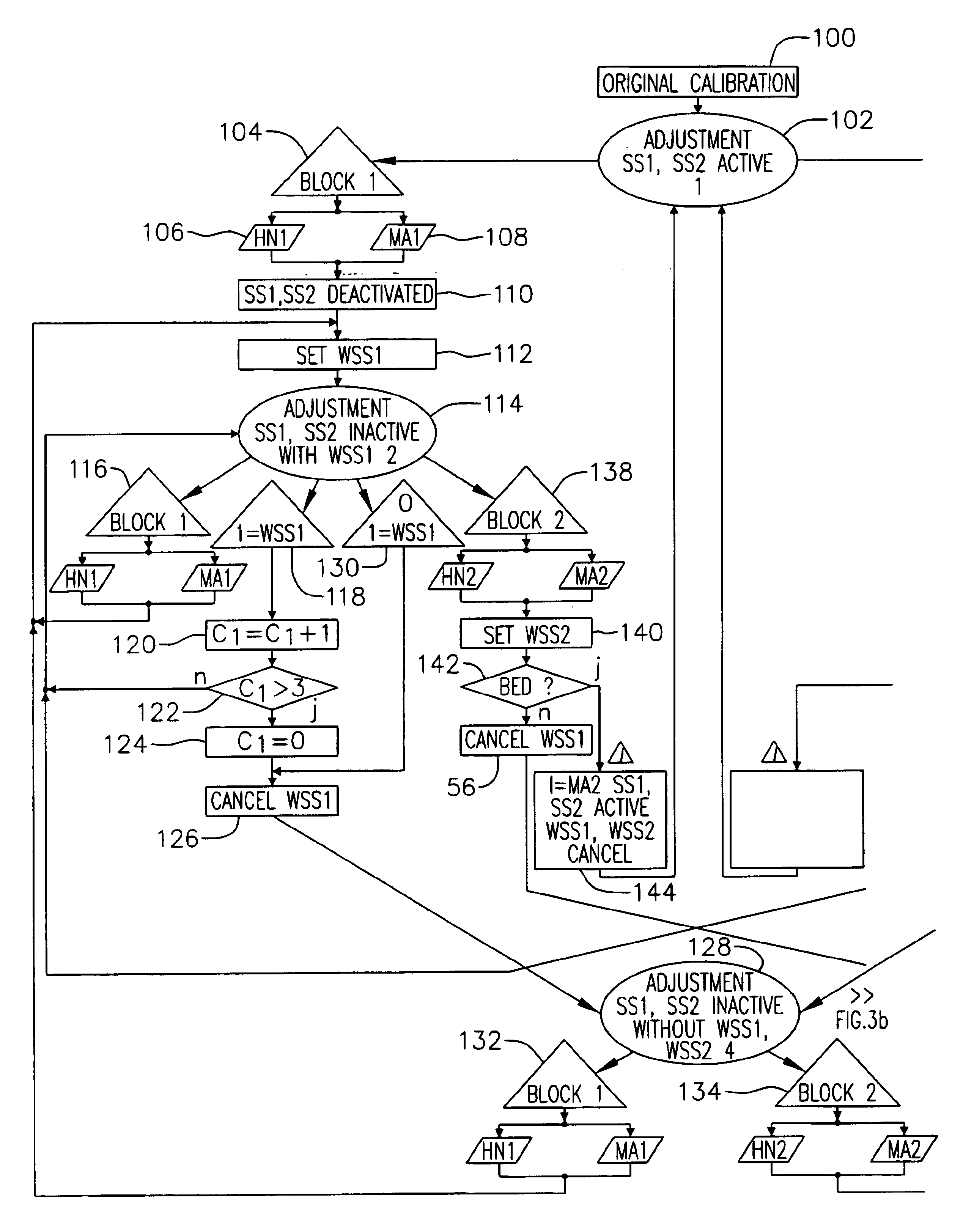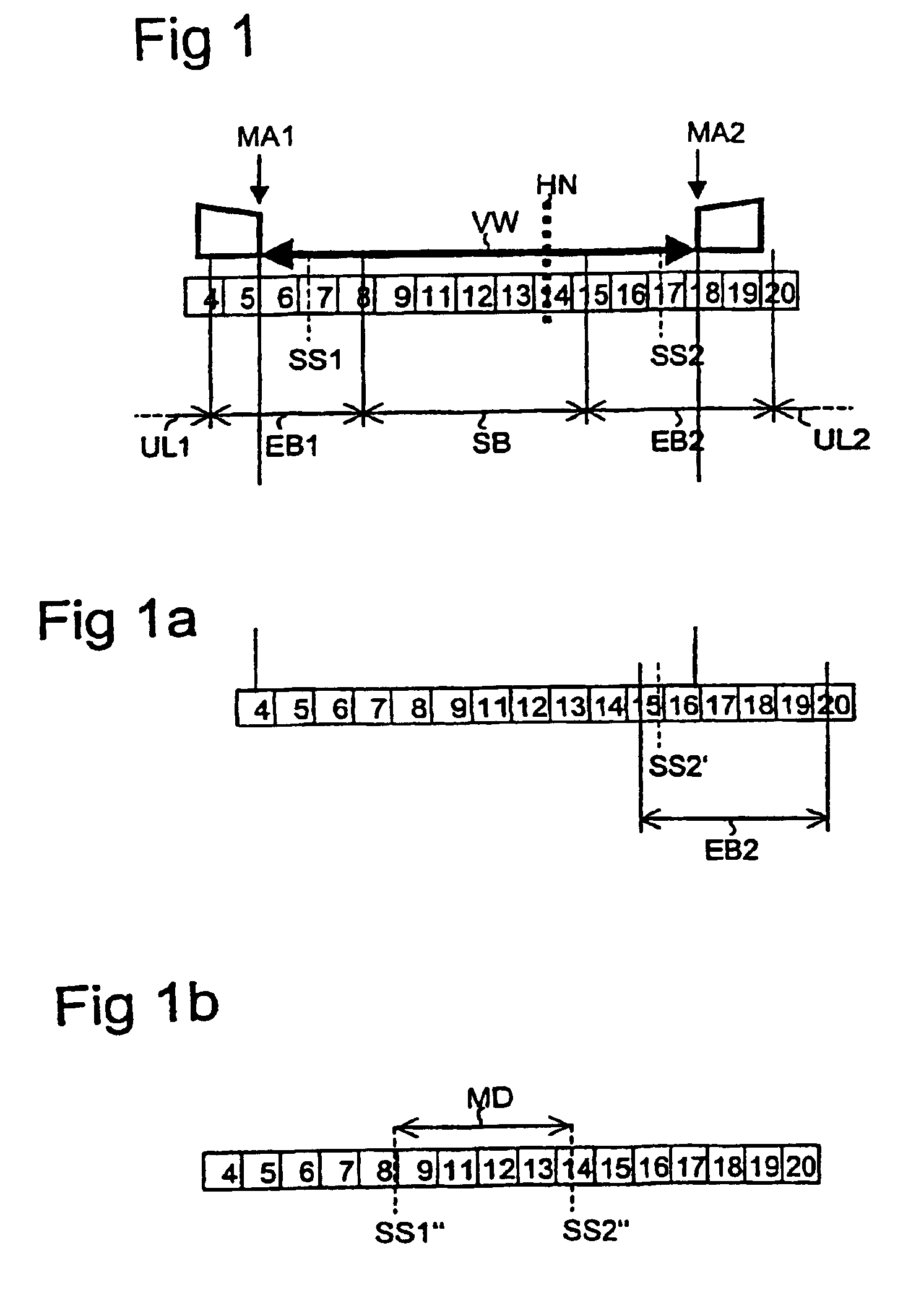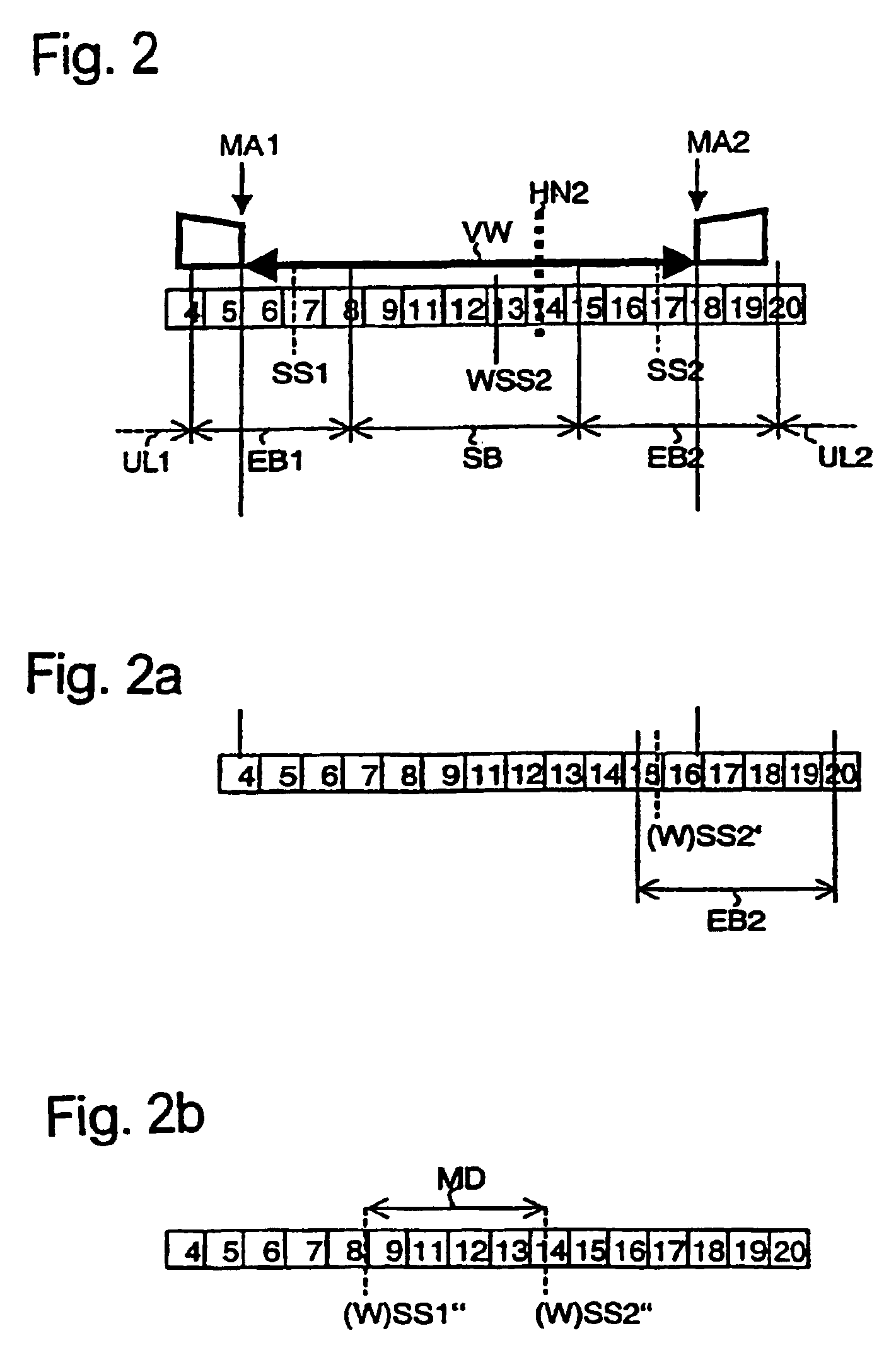Method for controlling an adjuster on a motor vehicle
a technology for motor vehicles and adjusters, applied in the direction of motor/generator/converter stoppers, dynamo-electric converter control, instruments, etc., can solve the problems of significant position errors, significant reduction of adjusting path, measurement errors, etc., to reduce adjusting energy and associate the positions of memory positions with adjusting positions more easily.
- Summary
- Abstract
- Description
- Claims
- Application Information
AI Technical Summary
Benefits of technology
Problems solved by technology
Method used
Image
Examples
Embodiment Construction
[0098]FIG. 1 illustrates an adjusting path VW of a vehicle seat adjuster according to one embodiment of the invention. The adjusting path VW extends from a first mechanical stop MA1 (left) up to a second mechanical stop MA2 (right). By way of example in the present embodiment this is a seat longitudinal adjuster, a head restraint adjuster, or another translational adjuster conventional in the art. A person of skill in the art will recognize that the method for controlling the longitudinal adjuster may also be applied to rotational adjusters, such as adjusting the incline of the seat backrest.
[0099]The actual position of the adjustable part of the adusting device is determined by an evaluation device which in the present embodiment evaluates the adjusting motion via an incremental transmitter and an associated sensor. The adjusting path VW is, in one example divided into a number of increments. In the illustration of FIG. 1 the adjusting path VW extends from the increment with the nu...
PUM
 Login to View More
Login to View More Abstract
Description
Claims
Application Information
 Login to View More
Login to View More - R&D
- Intellectual Property
- Life Sciences
- Materials
- Tech Scout
- Unparalleled Data Quality
- Higher Quality Content
- 60% Fewer Hallucinations
Browse by: Latest US Patents, China's latest patents, Technical Efficacy Thesaurus, Application Domain, Technology Topic, Popular Technical Reports.
© 2025 PatSnap. All rights reserved.Legal|Privacy policy|Modern Slavery Act Transparency Statement|Sitemap|About US| Contact US: help@patsnap.com



